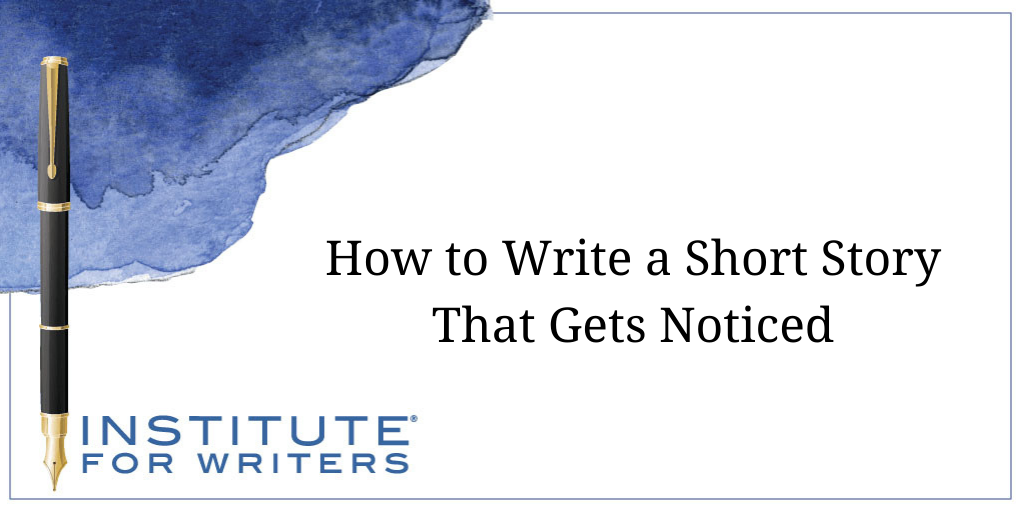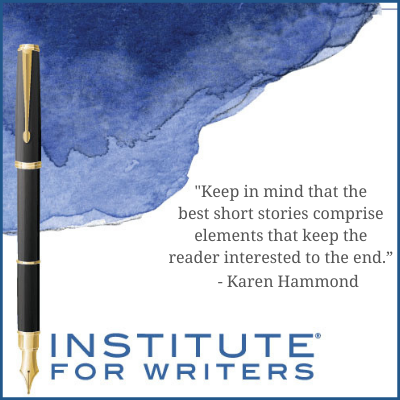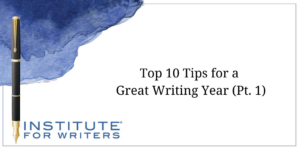
Top 10 Tips for a Great Writing Year (Pt. 2)
We’ve offered you five writing tips and tricks. Today, we bring you five more actionable tips to incorporate into your writing plan this year.

Venturing into the world of short story writing can be both fun and rewarding. Because there tend to be fewer outlets for short stories than for nonfiction, however, the journey to publication can sometimes be challenging. Let’s look at some of the elements of how to write a short story that will attract an editor’s eye.
Professional short story writers are often asked where their ideas come from. Many will explain that ideas are all around us and we need only to be aware of them and how to develop them into stories.
For example, on your morning subway commute did you notice the well-dressed woman softly crying into a tissue? What might have happened that got her day off to such a bad start? Could she become a character in your story?
When your family cleaned out your bachelor uncle’s apartment following his death, did they find 50-year-old love letters? Can you wrap a story around a long-lost love?
Is a wrecking ball taking down an old building that has been in your town for as long as you can remember? Could the once-magnificent building be the setting for a mystery?
Everyday occurrences and overheard snippets of conversation have jumpstarted many a short story. The next one could be yours! Just remember that while inspiration for a short story may come from real life, your job as a fiction writer is not to narrate facts as you would in nonfiction.
Instead, you should ask, “What if … ?” and turn your imagination loose.
Now that you have an idea, it’s time to turn it into story form. Keep in mind that the best short stories comprise elements that keep the reader interested to the end.

Your story should build to a climactic scene. In the above example, this might be a dispute between the bride and the maid of honor over whether the bride is making a big mistake. Do we have a story about testing the boundaries of friendship here?
Or perhaps you’ll focus on the relationship between the groom and the maid of honor whom he considers meddlesome and wants to get rid of. Is a murder mystery developing?
Ultimately, you’ll want to bring your story to a satisfying conclusion that resolves the story’s underlying problem. Many endings are happy, but a sad ending, especially one that offers some hope for better times ahead, can also work.
Writing the story is just the beginning. Careful editing and proofreading can spell the difference between an accepted manuscript and a rejection. Check details carefully. Does a character have blue eyes on page 1 and brown eyes on page 4? Is each character’s dialogue consistent with his or her personality? Unless there is a reason for it, such as a character telling a joke that involves slang, you don’t want someone speaking perfect English in one scene and making basic grammatical errors in another.
When you are certain all of your details are consistent, move on to polishing sentence structure. Read your manuscript out loud. If you find yourself stumbling over a convoluted, run-on sentence, your readers will too. Take time to revise and rewrite and enhance the flow of your story. The next step is to proofread carefully for missing words, misspellings, and punctuation errors. All of this takes time, and for most writers, it is not the most enjoyable part of writing. What editors refer to as a “clean manuscript,” however, meaning one with very few technical errors, will make your work stand out from the crowd.
Marketing your work is the next step. Check the listings in any of the books or online sites devoted to the craft of short fiction writing. Visit libraries and bookstores to find print publications seeking short stories. I always encourage beginning writers to look around them: Local newspapers and magazines can be great places for newcomers to achieve publication.
Once you have a piece accepted, you are officially a published writer and can use that credential in future cover letters. As the old saying goes, “Nothing succeeds like success.” Mentioning that you have already been published will encourage your next editor to give your work a careful reading.
Follow each publication’s guidelines to the letter. Some editors will simply ignore work that is not submitted as requested. Whether you are submitting electronically or by postal mail, remember to do a final check before you hit “send” or head to the post office. Does your manuscript fit within the publication’s word count maximum? Have you included a cover letter with the editor’s name spelled correctly? Is your contact information clearly visible?
Publication guidelines usually state when writers can expect to hear if their submission is accepted. If you haven’t received word within that time frame, wait another week or so and then send a polite follow-up such as, “I am checking to see if you received my manuscript, Title, which I submitted on Date. Please let me know if I can provide any additional information.” If two or three more weeks go by with no communication, you can try reaching out one more time or simply move on to another publication.
Many publications receive more short stories than they can publish, so don’t let a rejection get you down. If you are fortunate enough to receive feedback from an editor, it’s usually a sign that your work received careful consideration. Learn from what the editor has to say. Mention of an overall good story that got off to a slow start should encourage you to work on your opening paragraphs. A comment that your excellent plot is dragged down by excessive dialogue is good advice to keep your dialogue crisp and essential to the plot. And if an editor rejects your story but encourages you to submit more of your work, by all means, do so while your name is still fresh in his or her mind!
It goes without saying that whether this is your first published piece or your tenth, it’s time to pat yourself on the back for a job well done. Raise a glass to your success and then get right to work on your next short story!
New England Review, nereview.com/ner-submissions/
This magazine looks for intriguing, well-polished short stories. They welcome and encourage submissions from writers of every nationality, race, religion, and gender, including writers who have never been affiliated with an MFA program and whose perspectives are often underrepresented in the literary world. The word limit is 20,000, though most of what they publish is shorter than 10,000 words.
Strange Horizons, strangehorizons.com/submit
Some publications are devoted to specific types of short fiction. Strange Horizons welcomes speculative fiction, sci-fi, fantasy, horror, and other related short stories. Submissions are accepted various times throughout the year.
The Southern Review, thesouthernreview.org
Known for welcoming diverse fiction, The Southern Review, like many university-related publications, can be difficult to break into, but the magazine welcomes new writers with a great story. Submission period October 1 – January 1.
Proving that today’s technology allows us to become successful writers no matter how far we live from the publishing centers, IFW instructor Karen Hammond writes, edits, and coaches fiction and nonfiction writers from an island off the coast of Maine. She has been widely published in national and international magazines and newspapers, taught magazine writing to university juniors and seniors for many years, and is the recipient of several writing awards. She is the author of the popular guidebook, Backroads & Byways of New England. Karen shares her island home with her husband and an office cat named Noelle who stopped by one snowy Christmas and decided to stay.

We’ve offered you five writing tips and tricks. Today, we bring you five more actionable tips to incorporate into your writing plan this year.

For this month, we’ve rounded up some of the most motivational and actionable tips shared by our IFW bloggers over the years.

Jan Fields busts three common writing myths and shares how you can be sure these myths don’t derail your writing career before it even has a chance to start.
1000 N. West Street #1200, Wilmington, DE 19801
© 2024 Direct Learning Systems, Inc. All rights reserved.

1000 N. West Street #1200, Wilmington, DE 19801
© 2025 Direct Learning Systems, Inc. All rights reserved.

1000 N. West Street #1200, Wilmington, DE 19801
©2025 Direct Learning Systems, Inc. All rights reserved. Privacy Policy.
3 Comments
So many ways to understand your targeted audience. I loved the ideas and how to get started. I find that if I flesh out my characters, I get another idea while doing this and the really good story changes into something that make my keys start clicking!